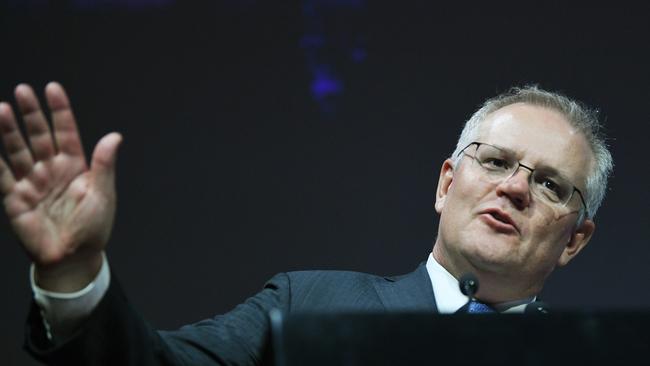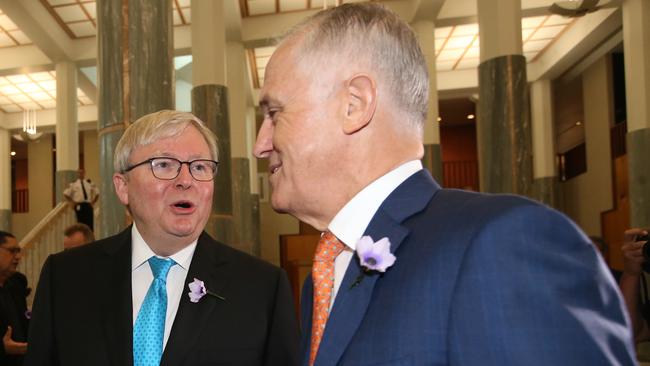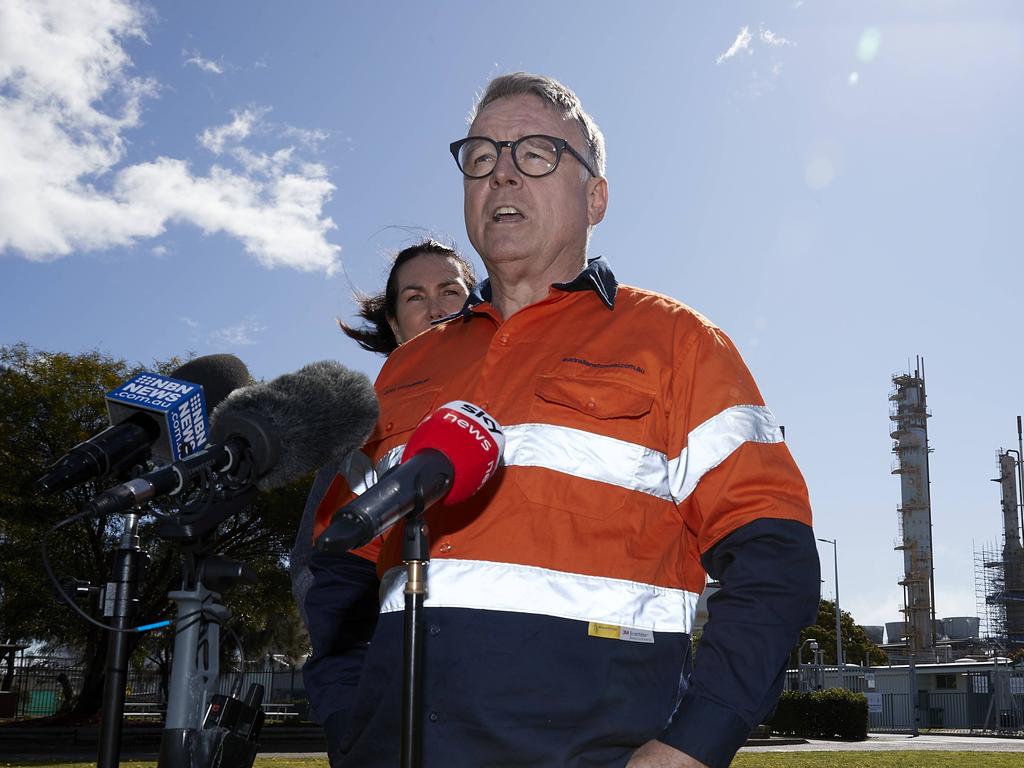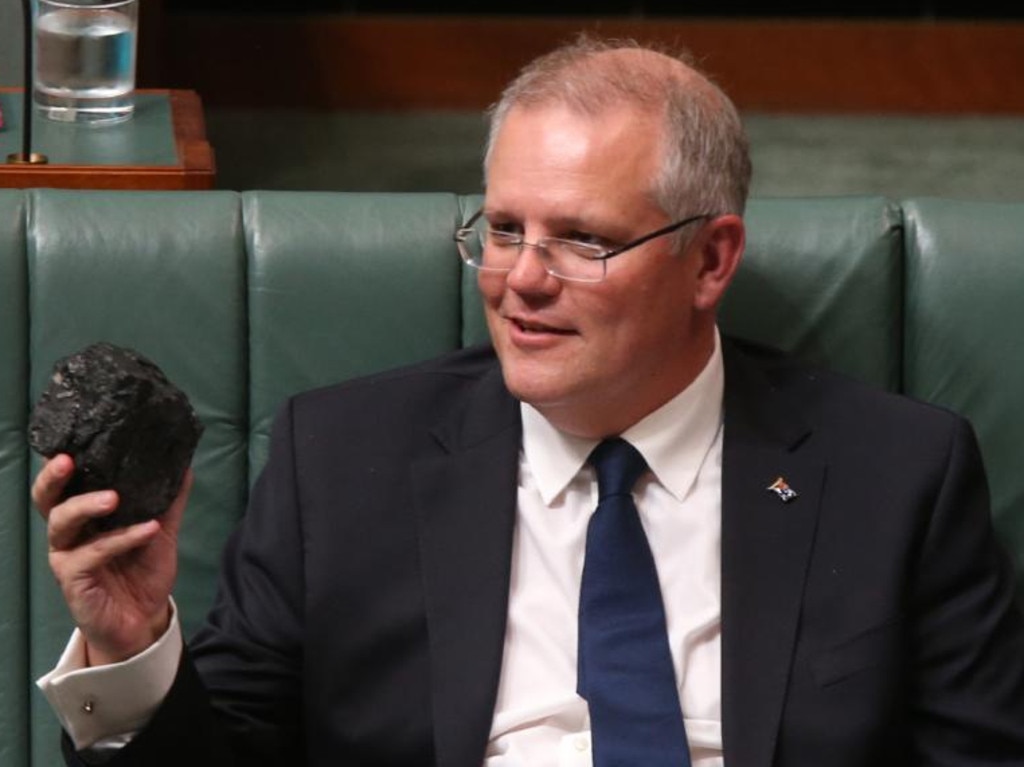
The ABC, the Nine newspapers and The Guardian saw Morrison’s September 14 gas announcement as a betrayal of the environment. On Sky News, backing gas was seen as betraying conservative voters. Both views are just politics.
Many advanced nations integrating renewables into their power grids have been using gas to “firm” their systems as wind and solar have made generation less stable. Luckily, Australia is only talking about the slow phasing-out of coal as older power stations are retired. In California, the Democrats have been phasing out the gas peakers we are looking to support.
As with South Australia in September 2016, California this year has been hit by blackouts. And just like here, environmental fundamentalists campaign against any technology with a carbon footprint while damning nuclear power, the best source of clean baseload electricity.
Many claim batteries are the answer. Maybe one day, but not yet. As this column has pointed out several times, South Australia’s $500m Tesla battery would power the state for only a few minutes.
It is designed to harmonise a system relying on a Victorian interconnector, gas and high levels of renewables.
Australia is the world’s largest supplier of coal, uranium and gas.
We should have cheap power but have exported power-intensive manufacturing industry jobs to Asia since the introduction of the Renewable Energy Target by then-prime minister John Howard in 2001.
Heavily subsidised renewables quickly began distorting the electricity market. This paper argued for a decade the RET was incompatible with the sorts of emissions trading plans that both Howard and Labor’s Kevin Rudd took to the November 2007 election.
Rudd won but the Greens under Bob Brown refused to support his emissions trading scheme. Rudd sought backing from then- opposition leader Malcolm Turnbull. Both men lost their jobs over a limited carbon policy that both parties had supported at a federal election.
Julia Gillard knifed Rudd in June 2010. Gillard then failed to win a majority in the August election and was forced to negotiate an agreement with the Greens that included a carbon tax she had promised not to introduce.
Brown’s successor, Christine Milne, later campaigned against gas, even though gas was implicit in the climate policy Gillard and Brown had negotiated.
Professor Ross Garnaut’s two reports for Rudd and Gillard on climate had made it clear the move to renewables would take decades. Gas, 45 per cent less carbon-intensive than coal, could smooth the transition.
All this came against a rapid expansion in gas exports without a domestic gas reservation policy to ensure cheap gas here. The gas debate has flared again as Morrison bit the bullet on reliability and price in his response to the Australian Energy Market Operator report on the effects of the planned 2022 closure of AGL’s Liddell coal-fired power station in the NSW Hunter Valley.

Critics from the left media say AEMO gave Morrison no basis to threaten to have the government’s wholly-owned Snowy Hydro build a gas plant in the Hunter if industry won’t commit to do so by next April.
That’s not a fair reading; AEMO does point to concerns on price and reliability even though its modelling suggests a Liddell shortfall more like 150 megawatts than the 1000mw Morrison wants. Given the California and South Australia examples, Morrison’s caution looks prudent.
In the Sydney Morning Herald last Thursday, Labor climate spokesman Mark Butler claimed coal and gas would not play any part in Australia’s future prosperity. It was a silly statement, given coal and gas are our second and third largest export industries after iron ore. Labor’s member for Hunter, Joel Fitzgibbon, says the ALP should be backing more gas.
Yet many in Labor seem to have learnt little from its defeat in resources seats at the 2019 election. The SMH on Thursday night reported tin-eared ALP frontbencher Mark Dreyfus had called Fitzgibbon “the idiot for Hunter” in a caucus meeting.
Why gas for electricity? Coal power generation is not suited to integration with renewables. Gas peakers can be turned on and off quickly while traditional coal units run 24 hours a day.
There is plenty of ideology on the right in this. Support for coal is concentrated in the National Party and One Nation. Media backers of coal tend to be supporters of former PM Tony Abbott, who seldom acknowledge it was Abbott who in 2015 first committed Australia to Paris Accord emissions reductions between 26 and 28 per cent by 2030.
No major party leader in government here is brave enough to follow US President Donald Trump out of Paris. Abbott did suggest that from the backbench after he was rolled in late 2015 by Turnbull. The right loves him for that, apparently forgiving him for committing to Paris in the first place.
Yet unless we leave Paris, there seems little reason to support coal over lower polluting gas. Building gas peakers will be the cheapest of our options, nuclear the least polluting but most expensive.
Last week, this newspaper’s foreign editor, Greg Sheridan — and indeed this column on many previous occasions — have pointed to the flaws in Paris.
The world is not walking away from coal. Europe is not meeting its commitments. China is commissioning new coal generation at a rate that exceeds the developed world’s retirement of coal power.
Sheridan quoted Asia Society figures suggesting China had 1040 gigawatts of coal-fired electricity today, rising to 1100gw by the end of the year and 1300gw by 2030. Its Belt and Road Initiative is financing coal expansion in The Philippines, Vietnam, Indonesia, Bangladesh, Pakistan, Mozambique, Malawi, South Africa, Zimbabwe and Serbia.
Much reporting about coal is wrong. Coal is regularly branded a stranded asset, yet thermal coal prices always depend on economic growth at the time. Demand is strong now and prices are rising again.
This raises another favoured Morrison option: carbon capture and storage. Chief Scientist Alan Finkel told ABC’s Radio National last Wednesday that CCS, originally supported by Rudd, remained a crucial technology because emissions would always continue.
Finkel said no one was talking about zero emissions but rather “zero net emissions”, which meant bio-sequestration (soil carbon, forests) and geosequestration of emissions. Finkel was explaining the importance of gas in firming the electricity system.
Herein lies the problem. Just as Rudd and Gillard did a decade ago, Morrison today confronts a green lobby wanting zero emissions now, even though the technology does not yet exist outside nuclear. Few on the right will say Australia should quit Paris, nor admit the popularity of renewables with voters.
In the face of this, Morrison has reached a pragmatic solution.






Many journalists seemed not to understand Prime Minister Scott Morrison’s support for gas-fired power generation this month.